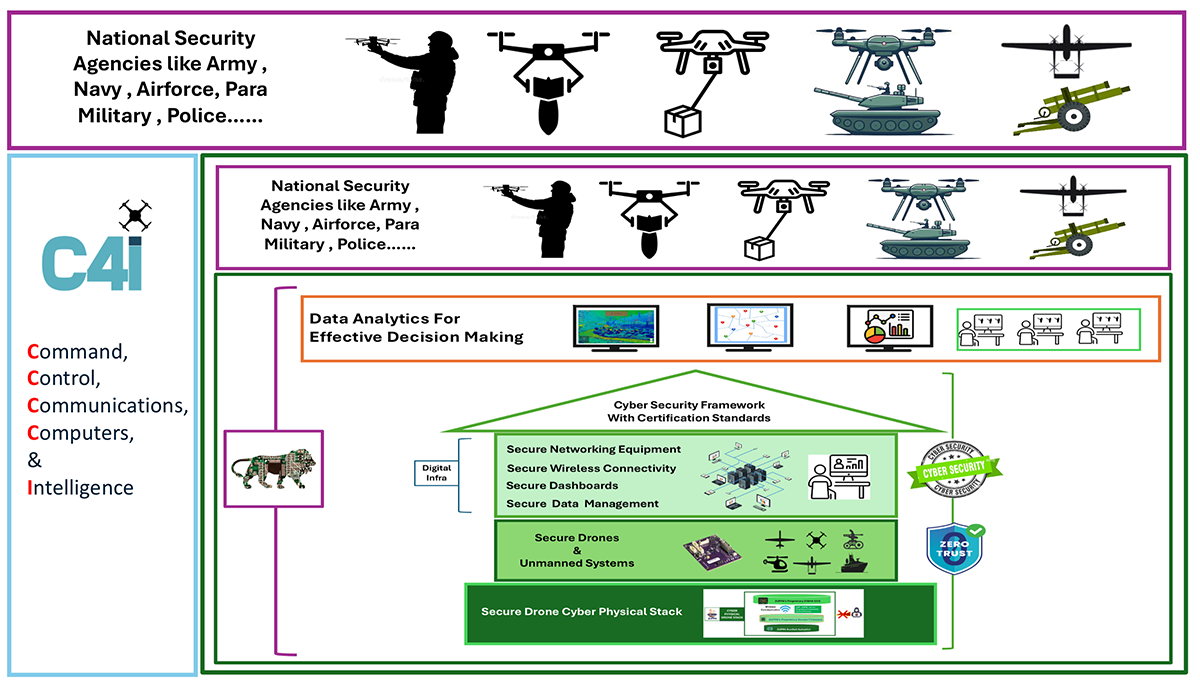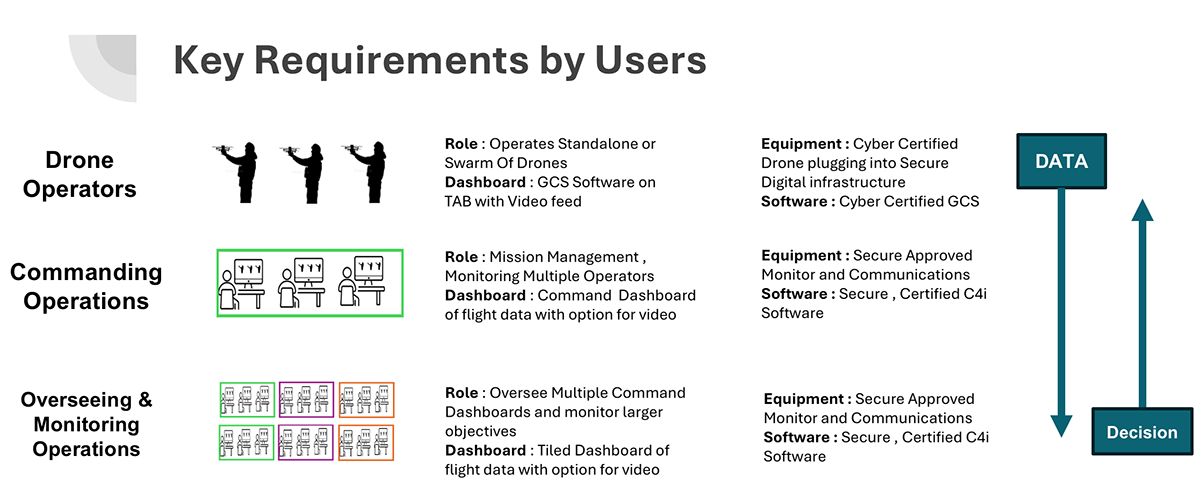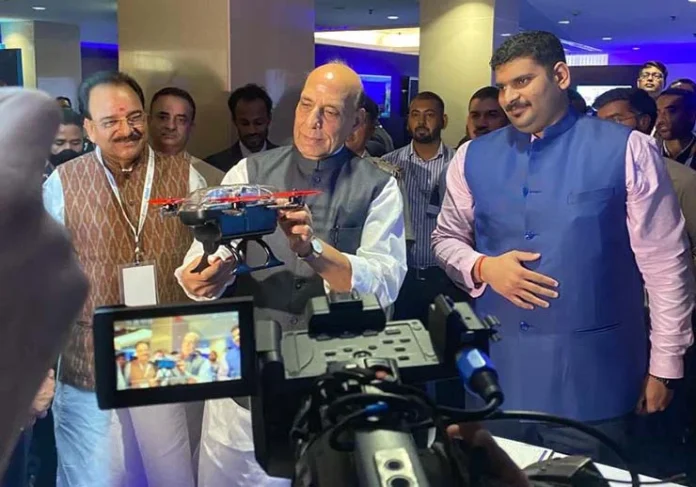The Defence Acquisition Council (DAC), chaired by Defence Minister Rajnath Singh, approved defence proposals worth around Rs 67,000 crore on August 5. The move aims to enhance the operational capabilities of the Indian Army, Navy, and Air Force.
The package includes the procurement of Thermal Imager-based Driver Night Sights for the Indian Army’s BMP infantry vehicles. These advanced sights will enhance night-time driving, improving the mobility and operational effectiveness of mechanised infantry units.
For the Indian Navy, the DAC cleared several key acquisitions. These include Compact Autonomous Surface Crafts, upgraded BrahMos fire control systems and launchers, and a modernised BARAK-1 Point Defence Missile System.
According to the defence ministry, the autonomous surface crafts will help the Navy detect, classify, and neutralise threats in anti-submarine warfare missions, adding a new edge to its underwater defence capabilities.
The Indian Air Force will receive new Mountain Radars to strengthen surveillance across high-altitude border areas. The DAC also cleared the upgradation of the SAKSHAM/SPYDER Weapon System. Once integrated with the Integrated Air Command and Control System (IACCS), the upgraded system will significantly improve India’s air defence preparedness.
In a major move towards modern warfare, the DAC has also approved the procurement of Medium Altitude Long Endurance (MALE) Remotely Piloted Aircraft (RPA) for the Army, Navy and Air Force.
The one area where the DAC lacks clarity are plans for procurement of the smaller class of drones which other militaries are procuring in the millions like the Turkish Songar swarms that posed significant challenges to Indian Air defence during Operation Sindoor when deployed in their hundreds across 26 locations on the Western front.
The asymmetric cost impact and need for coordinated deployment of this class of drones are amongst the most important learnings from Operation Sindoor especially, considering the huge disparity in our capabilities vis-à-vis of our adversaries.
The one area where the DAC lacks clarity are plans for procurement of the smaller class of drones which other militaries are procuring in the millions like the Turkish Songar swarms that posed significant challenges to Indian Air defence during Operation Sindoor when deployed in their hundreds across 26 locations on the Western front
Indian competencies were found to be wanting across multiple areas, as far as these drones were concerned; firstly, cyber security prowess relating to their resistance to hacking and hijacking; secondly, lesser indigenous content in predominantly Chinse-assembled drones; thirdly, inability to operate drones in swarms’ formation. Drones procured from the same company could not communicate to each other leave alone being integrated into swarms, and lastly, each drone was stand alone with communications being restricted between the drones and their operators, resulting in a very fractured and subjective situational awareness even within the regiment.
Hence, while DAC’s focus on the larger systems is essential from a national security perspective, it is important especially for the Indian Army to deploy a C4i System (Command, Control, Communications, Computers, and Intelligence) for all the drones operated by it.
Developing and deploying such a system becomes even more important considering that our western adversary has been engaging in this low intensity warfare with impunity, on a daily basis for the past couple of years, by sending in hundreds of drones with various payloads from contraband to arms. While DAC’s approvals address the needs of the conventional warfare, there is also a need to address the needs of the extended drone warfare situations, like in the case of the Russia-Ukraine war, which is in its third year with both countries having spent far more on this class of drone-war, than they have done on conventional weapons.
The Urgency
India’s renewed urgency around drone procurement is directly tied to Operation Sindoor, during the operation, both sides used drones in significant numbers, and it would not be wrong to say that besides air strikes by India, drone attacks formed a good part of its attack strategy.
India’s renewed urgency around drone procurement is directly tied to Operation Sindoor, during the operation, both sides used drones in significant numbers, and it would not be wrong to say that besides air strikes by India, drone attacks formed a good part of its attack strategy
In a major escalation on the intervening night of May 8 and 9, Pakistan launched a coordinated drone and missile offensive on Indian territories, reportedly using Turkish-origin SONGAR drones, as per the Ministry of External Affairs.
Subsequently drone intrusions by Pakistan continued in high intensity, with thousands of drones per days for the next couple of days, across the border before settling down to the pre- Op Sindoor levels of hundreds on a daily basis. The Indian response to these intrusions has been practically non-existent, i.e. while Pakistan is able to deploy hundreds of drones every day, India does not appeared to have capability of any sort to respond with even a single one in contrast.
Hence, it is imperative that India develop capabilities to manufacture, deploy, monitor and respond with hundreds or thousands of drones per day in the smaller class segment.
Army’s Small Class Drone Procurement Process to be Reformed through Standards
NCNC (No Cost No Commitment) demonstration of outcomes has been at the heart of the Army’s procurement process for this class of drones.
Unlike other procurements, where compliance to national or international standards for both products and manufacturing processes are essential to qualify for supply, in the case of this class of drones, demonstrating certain performance parameters on a NCNC basis has been the process followed for such procurements. In fact, the NCNC Technical evaluation of performance is exactly the reason why all previously procured drones in this class fell operationally short during Operation Sindoor, because it evaluated the outcomes and not the core technology inside the drone where all the vulnerabilities exist.
Further the lack of standardisation is resulting in multiple disparate systems being deployed across the army, resulting in the inability to build a common data analytics platform to coordinate drone operations.
Hence, the solution lies in recognising a Drone to be flying computer, that needs to be secured against cyber-attacks like hijacking, denial of service, phishing, spoofing etc., faced by any other computer that we use today like laptops, desktops, servers, mobiles etc. and building a complete system from ground-up, to address the current problems of cyber security, swarming and situational awareness of drone operations.
Unlike other procurements, where compliance to national or international standards for both products and manufacturing processes are essential to qualify for supply, in the case of this class of drones, demonstrating certain performance parameters on a NCNC basis has been the process followed for such procurements. In fact, the NCNC Technical evaluation of performance is exactly the reason why all previously procured drones in this class fell operationally short during Operation Sindoor, because it evaluated the outcomes and not the core technology inside the drone where all the vulnerabilities exist
An Aatmanirbhar C4i Solution is the answer to the Army’s small drones challenge, as this will also address the 8-10 weeks technology obsolescence life-cycle in this class of drones today, as it will ensure that only drones with adaptable cyber secure electronics would be capable of being plugged into the C4i system.
Proposed Ci4 Solutions for Enhanced Drone Effectiveness
The suggested C4i solution is a multilayered Cyber Security System that derives its strength from a secure indigenous “Cyber Physical Stack” that is certified to be compliant to MoD’s soon to be released Cyber Security Framework.

C4i Key Users by Role and Hierarchy
Only drones, wireless, monitors and computing equipment certified under MOD’s framework shall be procured and integrated into the suggested C4i solution

While drone deployment along the frontlines is expected to scale exponentially in millions, a dedicated C4i is a much-needed solution, which requires military planners to shift gears and move from thinking of a drone as just a device or armament, to reimagining a drone as a complete sophisticated and intelligent system. A swarm of drones need to be visualised as a single piece of equipment rather than as individual drones.
A drone needs to be looked at as a flying computer, generating a huge amount of sensitive geo tagged data that can provide valuable insights for timely, enhanced, and effective decision making.
Today, all that data other than the obvious video footage, is being practically wasted on account of the lack of a system to consolidate, coordinate and analyse the data being generated by the drones in use.
The C4i will also facilitate the consolidation of multiple drones within formations to be used either in standalone or swarm modes as operationally required.
The C4i systems can be expanded with integration of other indigenous technologies like; counter-drone as well as AI and ML solutions, which will drastically enhance both situational awareness and operational readiness of the defence forces in the technologically advanced battle fields of the future.
While drone deployment along the frontlines is expected to scale exponentially in millions, a dedicated C4i is a much-needed solution, which requires military planners to shift gears and move from thinking of a drone as just a device or armament, to reimagining a drone as a complete sophisticated and intelligent system. A swarm of drones need to be visualised as a single piece of equipment rather than as individual drones
Procurement Process Reforms
The current NCNC process of procurement has not delivered the desired results, as has been seen in Op Sindoor, hence product demonstration as a supplier evaluation criterion is critically wrong and requires to be replaced by a formal “Approved Drones” -based procurement system, under which suppliers are empanelled after their drones have been certified to MoD’s Cyber Security framework and acing trials at specific select locations to be notified by the users.
All levels of MoD procurement, whether out of revenue or capital budget shall only be of empanelled drones.
Benefits of the Suggested Procurement Procedure
Implementation of the suggested procedure would result in procurement of standardised the drones that are:
- Capable of being integrated into swarms as and when the needed based on an operational perspective,
- Capable of being securely integrated into a C4i Solution, by which all drone operations could be monitored, thus delivering a wider area situational awareness,
- Enhanced operational efficiency through standardised training fotr operators and analysts,
- Improved adaptability to merge operational needs on account of indigenous manufacturers’ control over the entire design and supply chain.
Overall, India’s defence and security forces need to work closely with the Indian drone industry in building a secure C4i ecosystem for drone operations, given the explosive growth of this system of warfare in the near future
Overall, India’s defence and security forces need to work closely with the Indian drone industry in building a secure C4i ecosystem for drone operations, given the explosive growth of this system of warfare in the near future.
ZUPPA Geo Navigation Technologies, India’s only developer and manufacturer of cyber secure drones and autopilots is already at an advanced stage of launching India’s first drone C4i Suite over the next few months. Built around its patented NavGati Autopilot Cyber Physical stack, over which the company has complete end-to-end control, from design and production to delivery, ZUPPA’s C4i Defender is expected to address the majority of lessons learnt, based on the performance of Indian drones during Operation Sindoor.
–The writer established Zuppa Geo Navigation Technologies Pvt. Ltd., popularly known as ZUPPA in 2008. He is a recognised thought leader and author on the subject of Cyber Security of Drones. He has a deep understanding of India’s Drone Ecosystem both from a regulatory and manufacturing perspective and is a well-known name in the Aerospace and Defence Industry. The views expressed are of the writer and do not necessarily reflect that of Raksha Anirveda






